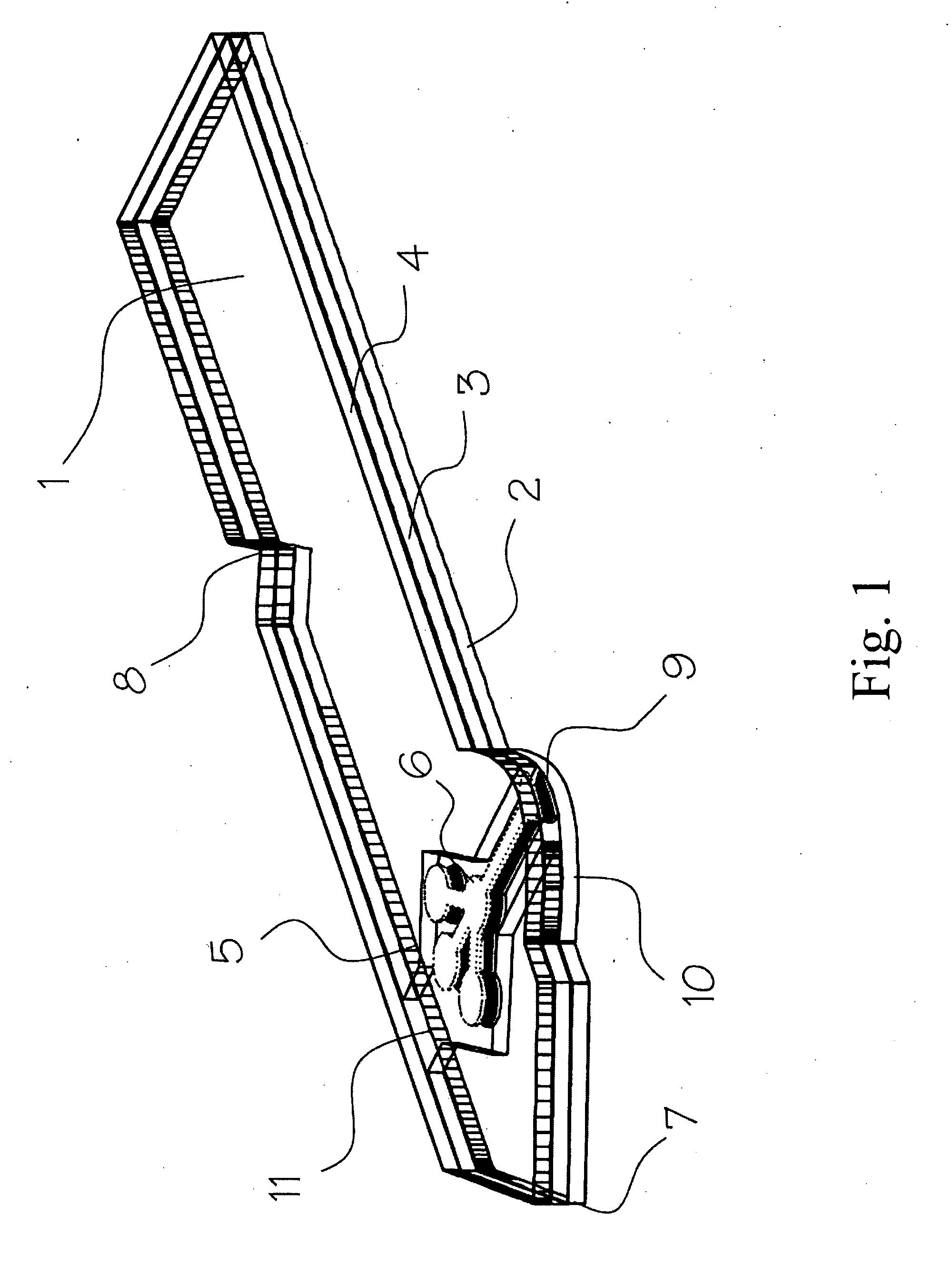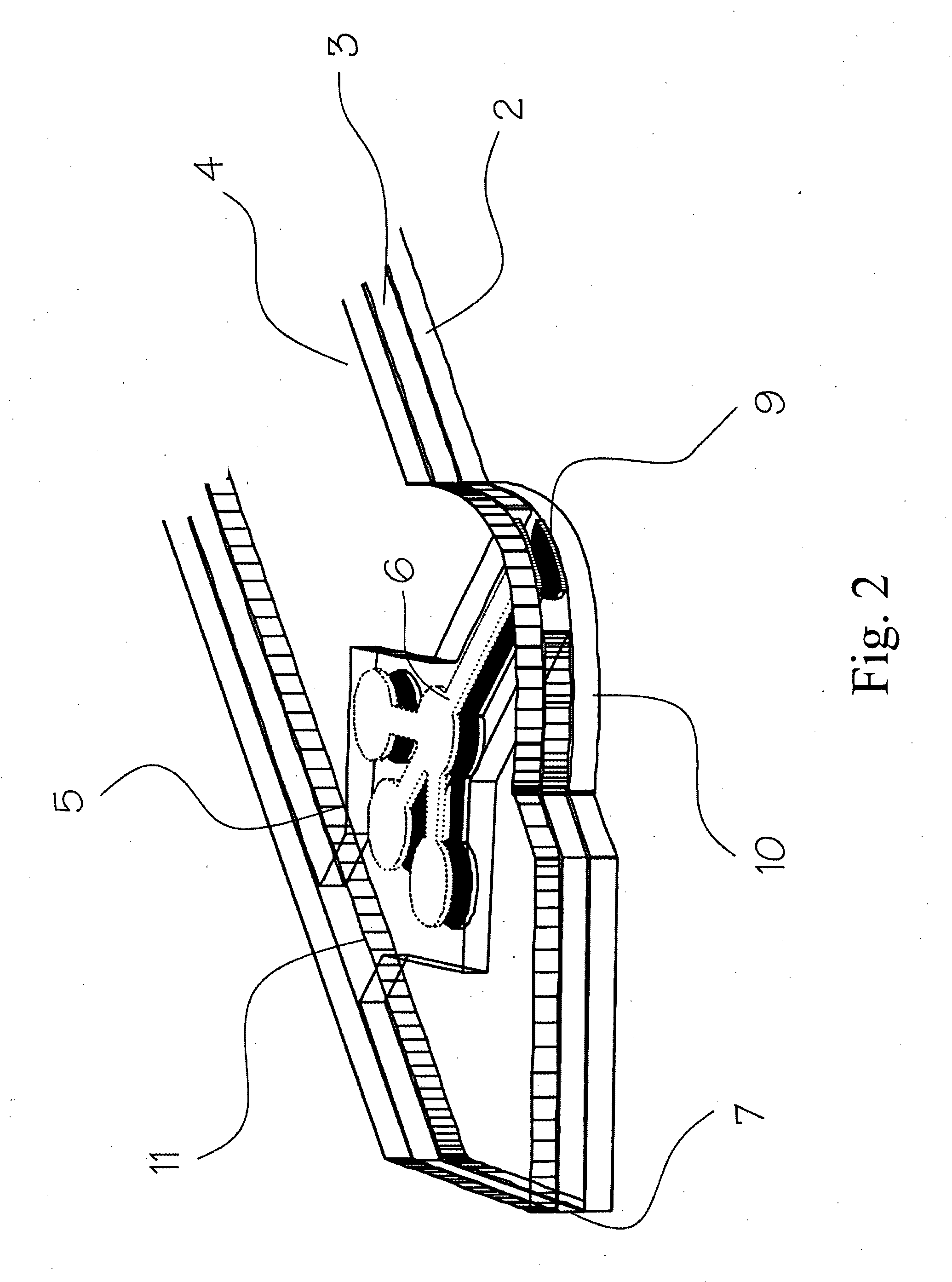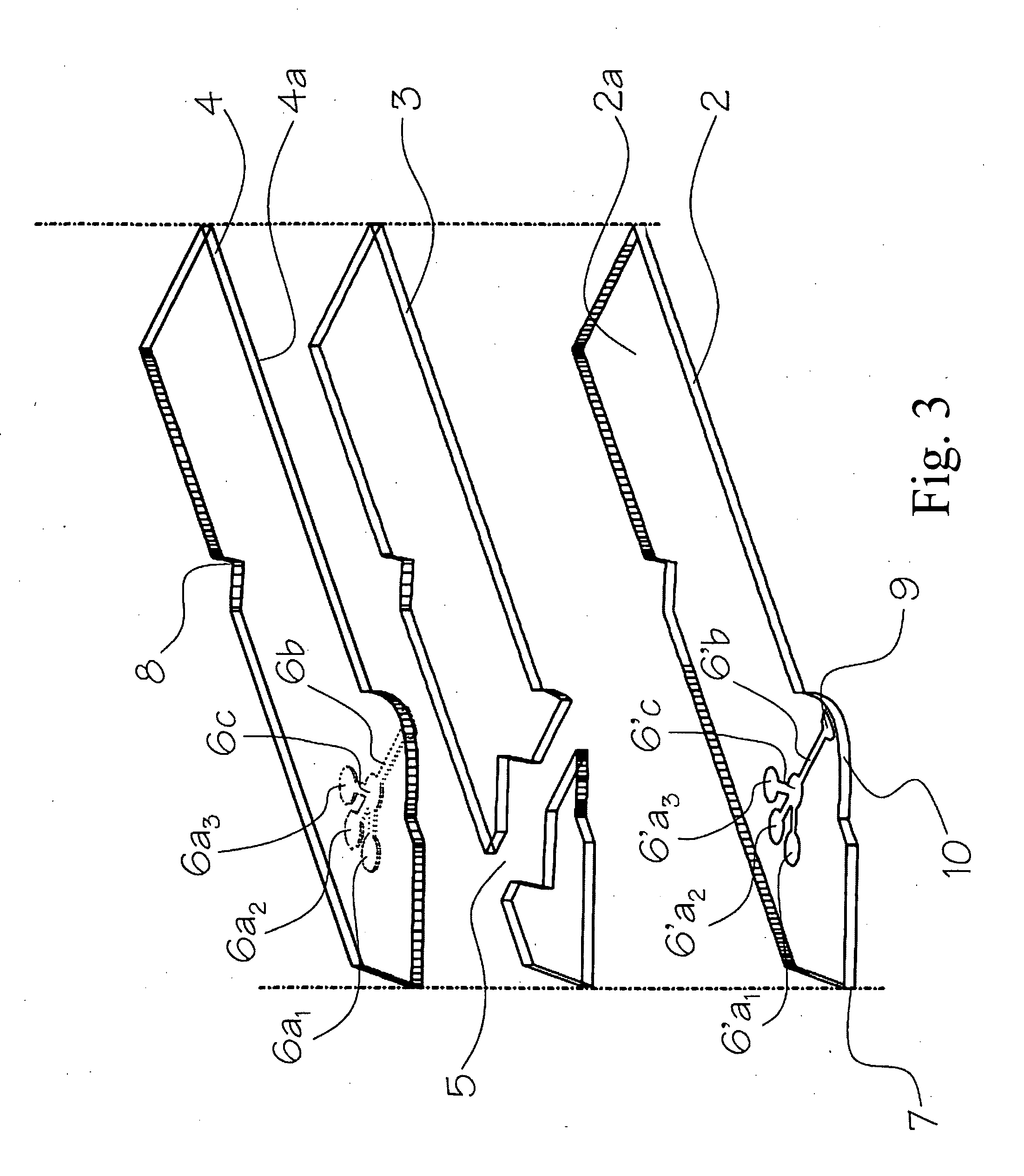Analyte test system using non-enzymatic analyte recognition elements
a technology of analyte recognition and test system, which is applied in the direction of biochemistry equipment, biochemistry apparatus and processes, nanotechnology, etc., can solve the problems of reducing the likelihood of a patient making a full recovery per unit, unnecessary treatment delay, and hazardous treatment, and achieves simple and disposable test elements favourable for point of care and home testing, and easy production of elements. , the effect of simple and convenient method
- Summary
- Abstract
- Description
- Claims
- Application Information
AI Technical Summary
Benefits of technology
Problems solved by technology
Method used
Image
Examples
Embodiment Construction
[0057]As shown in FIG. 1 and FIG. 2, the analyte test element 1 of the present invention is a multiple layer arrangement comprising a base layer 2, a centre layer 3 overlaying the base layer 2, and a cover layer 4 overlaying the centre layer 3. The centre layer 3 presents a discontinuity 5, which creates a hollow cavity in conjunction with the base layer 2 and the cover layer 4. Within said cavity there is located a sample distribution system 6 which is connected to a sample application area 9 located on one side of the analyte test strip. The sample application area 9 as interface to the user is preferably formed by a convex curve 10 extending from one major side of the analyte test strip for easier application of the sample. Opposite to the sample application area 9, 10 on the second major side of the analyte test strip is the location of an air vent 11 allowing the displacement of air while the physiological or aqueous fluid is distributed to the predetermined detection areas 6a,...
PUM
| Property | Measurement | Unit |
|---|---|---|
| Fraction | aaaaa | aaaaa |
| Concentration | aaaaa | aaaaa |
| Hydrophilicity | aaaaa | aaaaa |
Abstract
Description
Claims
Application Information
 Login to View More
Login to View More - R&D
- Intellectual Property
- Life Sciences
- Materials
- Tech Scout
- Unparalleled Data Quality
- Higher Quality Content
- 60% Fewer Hallucinations
Browse by: Latest US Patents, China's latest patents, Technical Efficacy Thesaurus, Application Domain, Technology Topic, Popular Technical Reports.
© 2025 PatSnap. All rights reserved.Legal|Privacy policy|Modern Slavery Act Transparency Statement|Sitemap|About US| Contact US: help@patsnap.com



